Is there anything better than opening your new set of embroidery thread cones? So shiny, so rich, so many colors! What to do with them all? Embroiderers, new and old, get overwhelmed with the hundreds of colors available to them, and often even if they do choose a palette of colors they think work together, they can still feel something is… lacking.
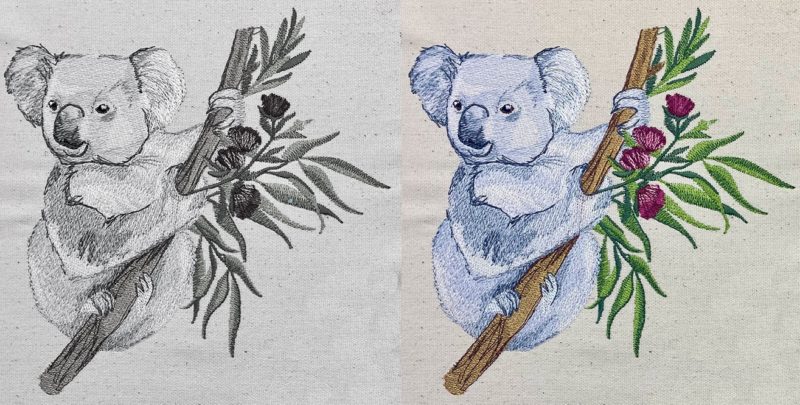

In this article, we are going to take a look at color theory. It may sound boring, but it is actually quite interesting. Plus, with a bit of background, you can pick a harmonious palette with some perfect accents. We will discuss:
- Color theory history; why are specific colors used over others.
- Color terminology; knowing terminology will give you a good understanding of color theory more effectively.
- Color harmony; why is the color wheel so important?
- Color theory for machine embroidery; how to determine proper colors for color blending in your embroidery designs.
Color Theory History
Color theory is much older than you would think. The ancient Greeks assigned meanings to colors, and the lustrous white buildings and statues we see today were once gaudily painted!
Aristotle in 632 BCE, wrote on color theory and how colors could be mixed to produce others. Leonardo DaVinci in 1490, wrote extensively in his notebooks on color and the effect of light. Isaac Newton wrote on the nature of primary colors (red, blue, yellow), creating a stir in 1704. In fact, the color wheel we know was created by Newton.
Poets, artists, even philosophers wrote on color. Goethe, the famous German philosopher, wrote on the nature of color and how it affects mood and perception. Color can be used to make us feel comfortable, excited, moody, sad, happy (by the way, it is no accident that emotions are assigned colors; red angry, blue sad, etc.).
Today, designers and architects have a lot of research to make sure that you feel the way they want you to in their spaces. Restaurants are often painted red which is rich and comfortable, and other spaces are painted in ways to make you feel uncomfortable so you will come and leave quickly.
Modern Color History
While color up to the mid-1800s was used to accurately depict what people saw, in the late 1880s, movements in the art world profoundly affected art as we know it today. Like the social movements that allowed for free expression, the painting movement (style) called Expressionism advocated for painting to evoke emotion or feelings and not simply record what you saw. Therefore, you might find a painting blue and dismal, angry and red with distorted figures and splashes of color.
Color Terminology
- Saturation: A measure of how intense, rich, or vivid color is. Most colors are in their most saturated forms straight from a tube, and then they lose saturation as you mix them with other colors.
- Hue: Refers to the position of a color on the color wheel.
- Tint/Shade: Tint is a color plus white. Shade is a color plus black.
- Tone: A broad term used to describe a color that is not a pure hue and is not black or white. In many cases, artists use tone to describe a color that has been grayed down.
- Value: How light or dark the color is, on a scale of black to white. Value is widely considered to be one of the most important variables to the success of a painting.
- Primary colors: A primary color, as described by Newton, is red, yellow, or blue. These colors cannot be made from others.
- Secondary Colors: Made by taking two primary colors and mixing them to create another color. So red + yellow = orange, or blue + yellow = green, or red + blue = purple.
- Tertiary colors: Made by combining two secondary colors.
- Pantone© Color Chart. The Pantone color chart system began in the 1950s in New Jersey and were created to aid in standardizing color for printing and manufacturing.
So, if we had a soft drink and wanted to have two different companies produce bottles or labels, ads, or pictures, the color chart system would ensure that the colors were the same. Likewise, embroidery thread companies reference Pantone numbers. If you are stitching for a client and have a specific color, they know your stitch out colors will be the same.
Color Harmony
Okay, so we keep talking about the color wheel…. well, here it is!
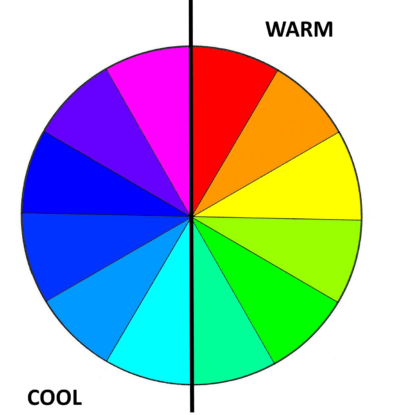
The color wheel is divided into warm and cool colors. When a warm color is placed next to a cool color, it creates a nice vibrant contrast. Alternatively, when a cool color is placed next to another cool color, blue and purple, for example, it is pleasing and harmonious. Though some would say it would be wonderful to live in an all purple and blue world; it would quickly become boring!
Warm colors usually portray activity and light- and cool colors are used for calm and soothing environments.
So let’s talk about neutral colors. Nope, they are not beige (warm) or light blue (cool). White, black, and gray are generally considered neutral colors and are used to create tints and hues of other colors.
Ready for an amazing fact? You would think that black is the inclusion of all colors, but it is not! In fact, black is the absence of color, and white is the inclusion of all colors. Now, this has to do with the light spectrum, but we are not having a physics class today!
Highlight Colors
The highlights are the areas on an object where light is hitting the object. Highlights are generally created by using the tint of the color. The opposite of highlights are shadows. Shadows are the areas on the object where light is not hitting. Remember that highlights do not have to be white! They can be of many colors. Likewise, shadows can be any color.
Lowlight Colors
Most ladies who have had hair colored know that lowlights are the rich dark colors that are used just like highlights but as pops of dark color. Lowlights can create depth and shadow and are just as important to hair and painting!
Color Theory For Machine Embroidery
So let’s apply some of the above to embroidery. Since embroidery can be anything from a colorful name on a bag to a photographic stitch out, it is crucial to remember that color is there for us to use. Do not assume anything; try everything!
Look to nature for realistic color palettes. Look to the masters for interesting and exciting color combinations! We always assume that master painters just happened that way, but it was a combination of an extraordinarily gifted person with a sound education. Most classical masters did color studies of those before them.

These peas are primarily green, right? These colors are analogous, and they live beside each other on the color wheel. They are lovely, but if they were the only colors in your stitch out, it could get a bit boring.

Let’s add another color. Purple is across from the green on the color wheel, and these are complimentary colors. The colors which sit across from each other can be used effectively to bring life to your work. They do not have to be directly across but something in the area as it still gives vibrancy.
Triadic Colors
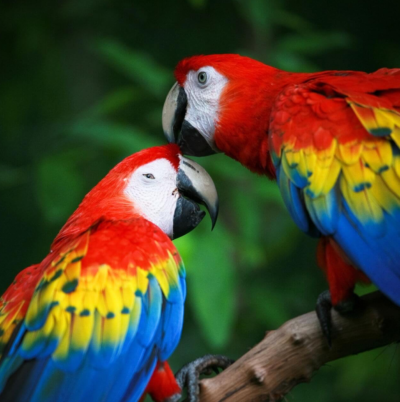
Triadic colors, like their name implies, sit in a triad on the color wheel. Bringing in this third color livens up our painting and makes it richer. In nature, some of the most vibrant examples are triadic. For example, these rainbow macaws almost seem artificial, but they are created that way to fit into their environment. Flowers, likewise, can have vibrant colors. These are often so that the ultraviolet let emitted attracts insects and pollinators.
Of course, there are so many more theories and examples but let us move on to embroidery because that is why we are here!
Base Colors in Embroidery
Many of the most beautiful embroideries start with some base color. It may not exactly match the colors around and on top of it, but it ties them all together and gives a feel of togetherness. Let’s look at some examples from our Embroidery Legacy embroidery designs!
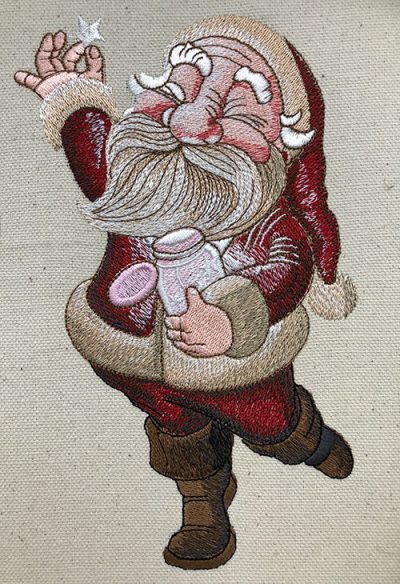
To check out our embroidery Santa Collection, click here.
If you have not had a chance to look at the Santa collection, now is the time! These wonderful stitchings have a vintage feel. Why? They have a base color tying them together, which you might not have chosen. If you look carefully at the design, you will see beige as the unifying color, and the pops of pink, white, and light blue bring it to life.
Using a base color in color blending embroidery can be as simple as laying down a large area of color (it can be as dense or light as you like, no need to be too heavy), and working your design on top or around it or using a unifying color in large areas or accents.
Using the theories above, let’s look at some more examples.

Click here for a closer look at this stunning koi fish embroidery design.
Take a look at this koi fish. It pretty much explodes right off the page, and it is lively and vibrant. This is a great example of complementary color. The bright orange and red set against the cool blues and white make for a great stitch out. These are complementary colors; they sit across from each other on the color wheel, and they provide contrast and activity.
Don’t forget the color you are stitching on! Your background color must be taken into consideration when choosing your colors.

This embroidery design portrait was the 2001 grand prize winner!
This is a lovely more photographic stitch out. It is done in complementary colors, but there are shades and tints (selecting colors with black or white added) and colors toned down by choosing threads that are mixtures of colors across the color wheel or choosing colors with small amounts of brown. For example, you can tone down a yellow by adding blue or a small amount of purple.
There is an art to selecting colors for large-scale stitch outs like this; it takes years to perfect, and you need a good eye, but there are many sources of free color theory classes, and you can always step outside your door and look at nature around you!
Are you interested in increasing your embroidery design stash with quality designs that’ll have you applying your new knowledge in color theory? Browse through our giant collection of machine-friendly embroidery designs by clicking here . Plus, check out our Embroidery Legacy Design Club to learn how to save on our entire database of close to 30,000 quality designs.
Using Pops Of Color In Embroidery
Embroidery relies on so many variables to make it stand out and appear lively and lifelike. There are stitch angles, stitch types, and layering, but little pops of color can bring just the right touch!
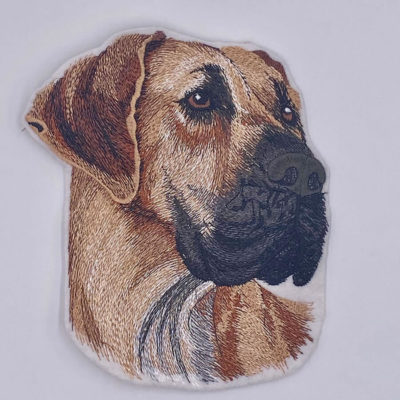
Check out this realistic Great Dane embroidery design by clicking here to see more detail.
This Great Dane is so lifelike! Of course the stitching and texture work well to give a lifelike appearance to the fur. When you first glance at him, the color pops in the eyes produce a 3D quality as well as the white/cream accents in the eyebrows.
Color pops used in the right amount can bring life and vibrancy to your stitchouts. A word of caution though, less is more! Just because things are great does not mean we need a lot of them! We all love pizza but an entire extra large pizza loaded with toppings dulls the senses (and the stomach) after a while.
When adding pops of color if you think you have enough, remove the last thing you added. Look away from the design and then glance back- are there too many? Another creative way of using a color pop is to use the opposite color on the color wheel.
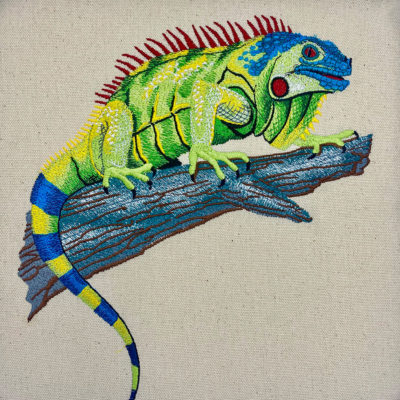
Interested in this colorful iguana embroidery design? Click here to see more.
This iguana is primarily blue and green with some yellow, but what makes him “pop” are those red/pink accents.
Thread Color Blending
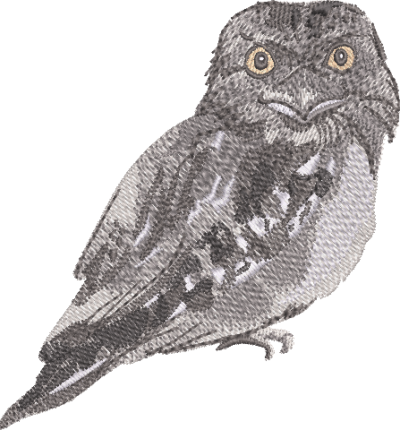
Click here for more on our Outback Frogmouth embroidery design.
This Frogmouth embroidery design is a great example of color blending. Although it is almost monochromatic (all one color) there are shades (adding black to a color) and tints (adding white to a color) as well as tones (adding another color) which make this little guy lifelike. It also helps him to blend into his surroundings. Some animals want to be seen, others don’t. Blending does not have to be monochromatic though, it can be rich and luscious!
Variegated Thread in Embroidery
We will not delve too much into variegated thread but please make use of it! You would not think of using it for an accent or a base layer but often these threads will create a depth which might have been lacking!
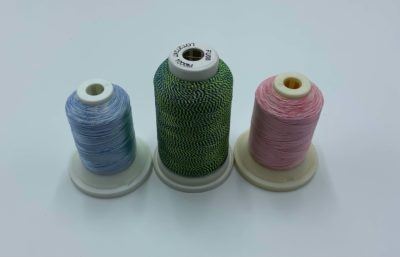
Variegated threads come in all varieties of color blends but here are a few things to keep in mind:
- What colors are included? (Complimentary? Analogous?)
- Are they simply Shades (add black) or Tints (add white)
- How many colors are included?
- What is the repeat? (short repeats can look like stripes)
- Is it an abrupt color change or a subtle one?
You may have a periwinkle blue Vinca flower with luscious green leaves and need some running stitch for definition around the flower leaves. Why not a variegated orange? It is across from purple on the color wheel so it will add pop and liveliness. Likewise, you may have a fairly monochromatic design (one color choice), adding a rainbow variegated thread might just be the touch it needs to come alive.
When choosing variegated thread the vendor should tell you information about the colors and the pattern of the color changes.
Color Palettes in Embroidery Thread
If it is offered, take a look at color palettes offered from thread companies. They may surprise you. You can also learn a lot about embroidery color theory looking at the colors they have selected. For beginners using these pre-chosen colors will help you to learn by seeing how they interact in your stitchings.
Color Blending In Embroidery Digitizing
When it comes to digitizing realistic embroidery designs, blending colors is one of the most important techniques to know for the best outcome of your design.

Blending in digitizing can be done manually, which can be more time-consuming but will give more of an artistic flair, or it can be done within your digitizing software.
If you’re interested in learning more about how to successfully color blend when digitizing read out Color Blending in Embroidery Digitizing article. We give you some tips, tricks, and problems to avoid for the best results possible. Nothing brings a design to life like knowing how to professionally color blend! Or for fast track results check out our Advanced Artistic Merit & Color Blending Techniques course by clicking here.
Conclusion: Apply Color Theory To Your Embroidery Designs For Results That Stand Out
We discussed so many things but some of the key points you need to remember:
- Learn about the color wheel; the different colors and how they can be mixed.
- Think about ways to use color pops in your stitchings. Colors close to the main color or opposites which may not seem good in theory but work really well!
- Look to nature for color ideas.
- Remember that colors you think are there may be just the tip of the iceberg (clouds)
- Try some variegated thread for variety, have some fun!
- Learn some new color choices by looking at professionally created designs and vendor color palettes.
Thanks for reading and allowing us to help you to stitch your best! Have a colorful week!
P.S. Don’t forget to browse through our over 30,000embroidery designs to get an idea of how and when to use certain colors. If you’re new to our designs, we highly suggest you download our free Embroidery Legacy Design Kit for 11 free designs so you can see for yourself that the proof is in the stitching.

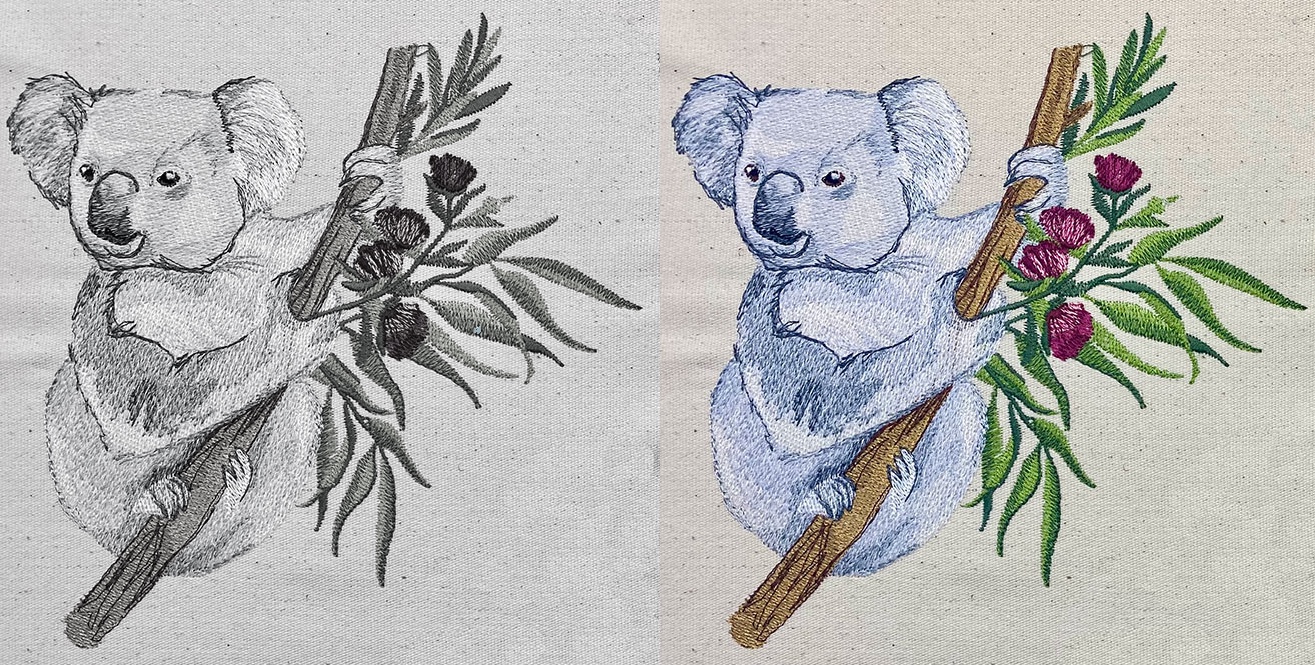
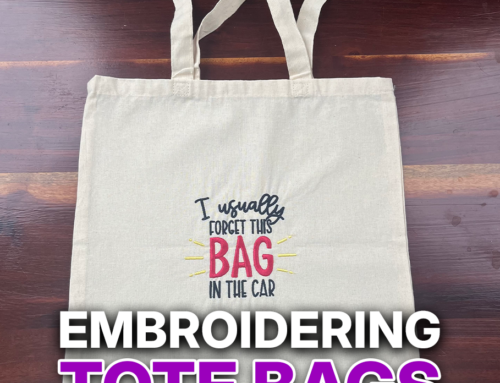
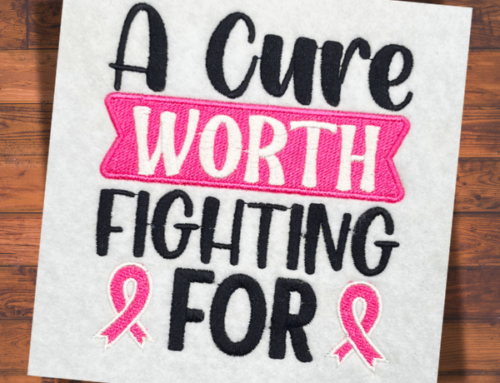

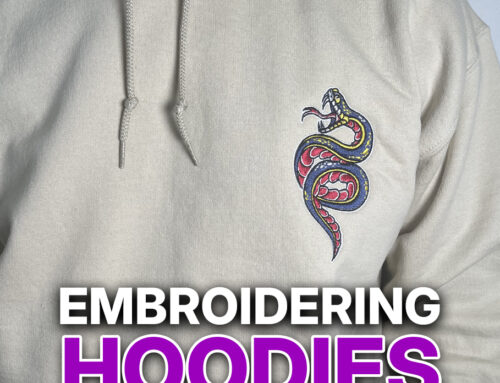
Hi John. Thank you for this article. Excellent information which I really enjoyed.
Glad you enjoyed it Mark, thanks for reading!